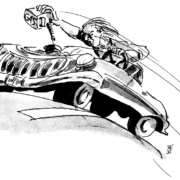“Going Faster” on ISO 19867

Many years ago, Kirk Smith hired Aprovecho to help Rob Bailis from U. C. Berkeley update and add emissions to the Water Boiling Test in the 1985 International Testing Standards. The Water Boiling Test (WBT) measured in the lab how much wood was used at full power and when simmering water. The writers of the International Testing Standards defined the purpose of the WBT as: “While it does not correlate to actual stove performance when cooking food, it facilitates the comparison of stoves under controlled conditions with relatively few cultural variables.”
The 1985 Kitchen Performance Test (KPT) measured fuel use in actual households, and the Controlled Cooking Test (CCT) was a bridge between the WBT and the KPT. ARC uses the Controlled (or Uncontrolled) Cooking Test to develop stoves with local committees of all stakeholders, as recommended by Sam Baldwin. In this test, locals cook with their own fuel, pots, and cooking practices, hopefully at Regional Testing and Knowledge Centers under the total capture emissions hood. Using the WBT in the lab has been a good tool for ARC to improve heat transfer and combustion efficiency. The cooks, marketers, manufacturers and funders in the project have to make the stove. It must work for users. They are experts.
We now use the new, updated Water Heating Test (ISO 19867) to improve heat transfer and combustion efficiency in the lab and it’s great. We are directed to try to use the type of wood, pot, and cooking practices from the intended project location. ISO 19867 also has us test the prototypes at high, medium, and low power to learn more about performance. As said, there are many other variables that can only be learned from the local cooks and everyone involved in the project. How much the can stove cost, that chapatis have to be toasted in the fuel door, that cooks in southern India sit cross legged so the stove must be pretty short, etc. is information that is obviously necessary and field based. The idea is that lab tests inform the prepared mind of the engineer who then works hand in glove with the project stakeholders in their location to make an effective product.
Kelsey Bilsback from Colorado State University advised that lots of times stoves in actual use are operated at exceedingly high fire powers. We agree! When applicable we use very high power (and relatively untended fires with sticks gathered from the forest). We are trying to find out whether a biomass stove burning found fuels can be clean burning at the equivalent of 85 MPH.
Thanks, Kelsey! Good idea!


 Aprovecho Research Center
Aprovecho Research Center
Is there a list of laboratories world wide which can run the tests and issue recognized certificates? Please tell me several, not just “we can do it”.
Perhaps this list will be of help: https://cleancooking.org/regional-testing-and-knowledge-centers/